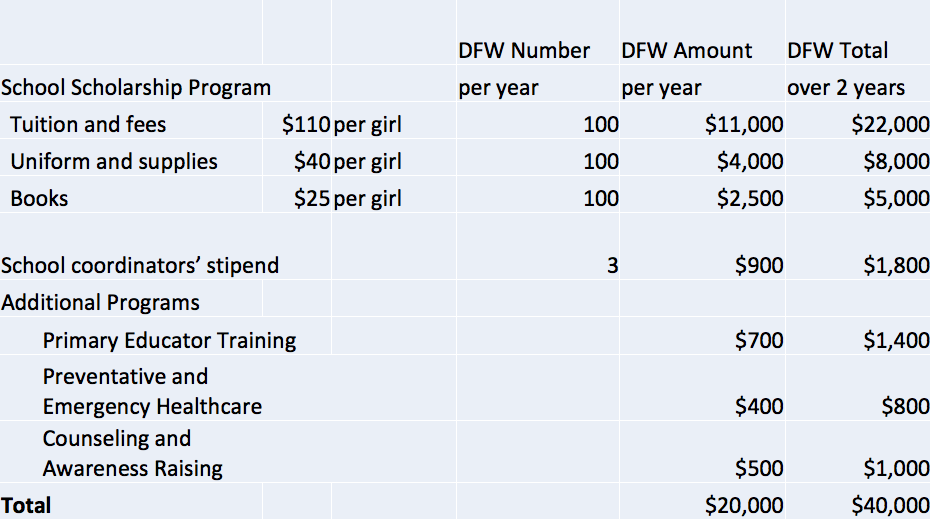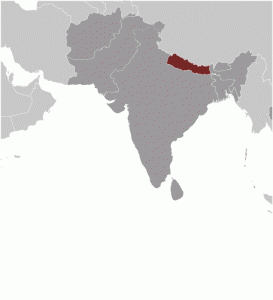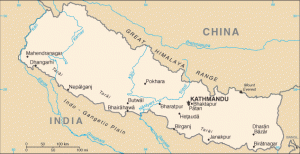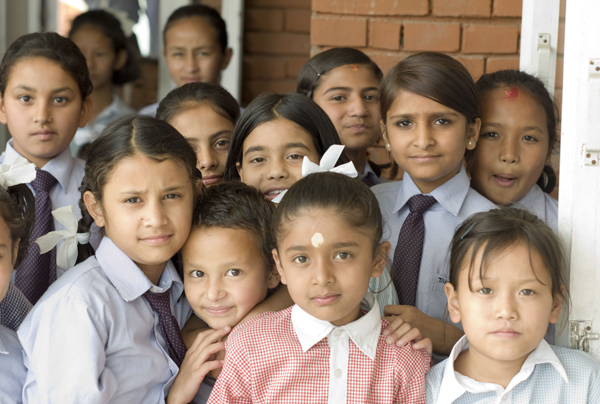
Mission
Little Sisters Fund provides hardworking, intelligent and financially disadvantaged South Asian girls the opportunity to obtain an education in the face of adverse conditions such as extreme poverty, deprivation or social prejudices.
Life Challenges of the Women Served
Gender disparity, especially in education, is a critical issue in Nepal. About 66 percent of men can read and write, while only 43 percent of females can. In rural areas, 7 out of 10 girls drop out of school by age 16. Young girls who are not in school are particularly susceptible to trafficking for the sex trade, child labor and child marriage. At 51 percent, Nepal’s rate of early marriage is one of the highest in the world, with girls married four times as often as boys. As many as 10,000 – 15,000 girls are trafficked into the sex industry annually.
The Project
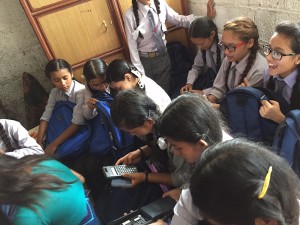 Through the provision of school scholarships and holistic support encompassing health, mentoring, and awareness raising, this program aims to help combat child trafficking for the sex trade, exploitative child labor, child marriage and lack education for economically disadvantaged and marginalized girls in the districts of Banke and Dang. This risk to girls is primarily due to economic disadvantage, but can also be exacerbated by marginalization due to caste or ethnicity, disability or family situation. These districts along the Indian border in the Midwest of Nepal, are rural, with many people relying on subsistence farming. The nearby open border with India means that girls living there are particularly at risk for trafficking. Given this risk and other socio-economic factors, the Little Sisters Fund recently selected Banke and Dang as two of five districts for strategic expansion.
Through the provision of school scholarships and holistic support encompassing health, mentoring, and awareness raising, this program aims to help combat child trafficking for the sex trade, exploitative child labor, child marriage and lack education for economically disadvantaged and marginalized girls in the districts of Banke and Dang. This risk to girls is primarily due to economic disadvantage, but can also be exacerbated by marginalization due to caste or ethnicity, disability or family situation. These districts along the Indian border in the Midwest of Nepal, are rural, with many people relying on subsistence farming. The nearby open border with India means that girls living there are particularly at risk for trafficking. Given this risk and other socio-economic factors, the Little Sisters Fund recently selected Banke and Dang as two of five districts for strategic expansion.
These districts were not heavily impacted by the April 2015 earthquake. While LSF has expanded the number of priority districts to include those severely hit by the disaster, LSF remains committed to tackling the challenges in Banke and Dang that were identified prior to the quake.
This project will directly support 100 girls as well as 50 teachers in the two years of the project, and indirectly impact more than 1,500 students and community members. While the funds will support the education costs of 100 girls for each of two years, Little Sisters Fund always commits to funding the full education (through grade 12) of any girl who enters their program provided she earns basic passing marks and meets attendance requirements.
LSF takes a holistic approach with child protection and education at the center. The largest component of the project is support for tuition and related school costs for 100 girls in each of two years. In addition, the grant will also provide the comprehensive support that is critical to ensuring that girls not only access school, but thrive there and position themselves for future success. This includes:
- mentoring provided by school coordinators, who are young female leaders who have overcome similar challenges on their paths out of poverty
- community awareness raising to build a more supportive society
- basic health education and preventative healthcare
- teacher training to elevate the overall quality of education offered.
Girls who enter the LSF program at risk for marriage or trafficking and with little hope of a quality education leave the program able to support themselves, with good job prospects and with the confidence to say that they will not marry until their mid- to late-20s even though that goes against societal expectations. The benefits of educating females in lower-income countries are well-documented. Educated women marry later, have fewer and healthier children, earn more and invest more of their earnings in their families and communities. Thus, the impact of an investment in the education of a girl is multiplied in her family, community and future generations.
Further, LSF encourages young women in Nepal to become generous givers themselves. In 2009, the girls decided to come together and pool their money to help other girls in need. That small and spontaneous effort has become the Annual Donation Drive. Many girls save their snack money or choose to walk instead of taking the bus so they can contribute 5, 10 or 50 rupees (5, 10 or 50 cents) toward scholarships for others. Parents, staff and friends in Nepal also donate. Last year, more than $1,100 was raised. As more girls graduate from LSF programs, pursue higher education and find good jobs, the in-country donations grow. The first girl LSF supported is now fully funding the education of another girl who has no relation to her, and many other alumni are also making contributions.
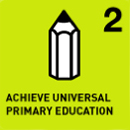
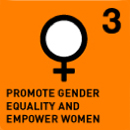
Questions for Discussion
- How do you think education can stop human trafficking in Nepal?
- Why should the focus be on such young girls?
- What would you say to the mothers of the Banke and Dang regions to offer support?
How the Grant Will be Used
DFW’s grant of $40,000 over two years will directly support 100 girls and 50 teachers and indirectly impact more than 1,500 students and community members.
Support includes:
- Tuition and fees for the school scholarship program
- Uniforms and supplies: Girls receive two uniforms in their first year of support and one in each subsequent year. Supplies include a backpack, notebooks, dictionary, an umbrella, toothpaste, toothbrush, soap, nail clippers, pencils, a pen, colored pencils and geometry tools as grade-appropriate.
- Books: Covers textbook and exam preparation book costs.
- School coordinator: Each coordinator will provide mentoring, monitoring and support to approximately 25 girls. Dining for Women funds will support three school coordinators.
- Support for additional programs:
- Primary Educator Training
- Preventative and Emergency Healthcare: Through this program, girls receive basic education on health and sanitation topics (hand washing, menstruation and puberty, etc.), as well as preventative care such as regular deworming medication and multi-vitamins. LSF also supports emergency issues, such as treatment for a broken bone.
- Counseling and Awareness Raising: In monthly sessions girls learn about and discuss issues such as child marriage, human trafficking and dangers to watch for, and the importance of education.
Why We Love This Project/Organization
We love the focus of Little Sisters committing to health, education and mentoring over the long term for the individual student. Involving the alumni offers opportunities to pay it forward.
Evidence of Success
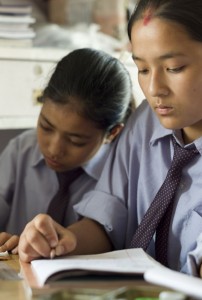 To date, LSF has supported more than 1,900 girls, with 1,700 currently receiving full scholarships. Each girl LSF educates and protects from sex-trafficking, marriage and labor is a major achievement. In addition, LSF is proud of the following metrics of success:
To date, LSF has supported more than 1,900 girls, with 1,700 currently receiving full scholarships. Each girl LSF educates and protects from sex-trafficking, marriage and labor is a major achievement. In addition, LSF is proud of the following metrics of success:
- 98 percent year-on-year continuation rate. In comparison, UNESCO estimates that only 56 percent of poor rural girls complete primary school, and just over 20 percent complete grades 9 and 10.
- 98 percent pass rate (overall throughout their 15-year history) on the School Leaving Certificate, a national exam all 10th grade students must take. The national average for females is about 40 percent.
- Common jobs for LSF graduates include teachers, nurses, engineers and NGO employees. Many of their graduates are paying it forward by helping fund the education of the next generation of Little Sisters.
- Primary Educator Training enhanced skills of more than 180 teachers, creating a more positive learning environment for more than 3,600 children.
Voices of the Girls
My own experience of being a daughter of poor and illiterate parents from a rural village made me personally aware of how vulnerable young girls can be in Nepal. Every year I walked six days in a row to Kathmandu for education and returned home during the two months of winter vacation. As there was no other mode of transportation at that time, walking up and down the forested mountains and crossing the rivers in wooden canoes was a challenging experience for me. However, I finished my school, college and university education through hard struggle against heavy odds. It was almost a mission impossible. Today I am where I am, and doing what I am doing thanks to my education.
–Usha Acharya, Co-Founder & Executive Director, Nepal
[Usha has two master’s degrees from universities in India, has taken courses at Harvard and Columbia, and has published two books and multiple articles.]
I didn’t know the right age for school. When I was a little girl, all my friends were in school but I was not. So I used to ask my father, ‘when can I go to school?’ He always replied, ‘next year.’ I used to dream of wearing school uniforms, carrying books in book bag and walking to school. But the ‘next year’ never came to me. One day I asked my seriously sick mother the same question that I used to ask my father. She replied, ‘We can hardly afford food and clothes for you, how can we meet the school expenses?’ Her answer made me realize our situation.
–Sapana, LSF graduate currently pursuing her bachelor’s degree
[Both of Sapana’s parents died when she was still young. Today, she puts part of the money she earns from her work-study job toward a scholarship for another (unrelated) Little Sister.]
I have been a part of the Little Sisters Fund since I was about 8 years old. Little Sisters Fund gave an opportunity to go to school and live my dream. My sisters have always encouraged me and the only reason for me to come overseas and study is all because of this organization which I am really thankful for.
For as long as I can remember, I have always wanted to dedicate my life to medicine and help people with what I can. My devotion to science has led me to where I am today: a freshman [in college in the USA] and a biochemistry major. I am making progress too in pursuing my education in the field of pharmacology and living my dream.
–Aakriti
Because of the Little Sisters Fund, now I am free. I am confident. I have more power to overcome social obstacles. My parents allow me to be myself. Because of the Little Sisters Fund, now I’m going to be a registered nurse.
–Sumjinah, LSF graduate
About the Organization
The mission of the Little Sisters Fund is to encourage economically disadvantaged Nepalese girls to become empowered leaders through education, mentoring, and community support. Established in 1998 by Usha Acharya and Trevor Patzer, the Little Sisters Fund has grown from a single scholarship to currently serving more than 1,700 girls in 19 districts through nine programs. Trevor’s education in the United States was supported by a family friend. A decade later, he traveled to Nepal and saw the need for education funding. With the help of Usha, his mentor, Trevor helped fund the education of one girl, which ultimately sparked the creation of Little Sisters Fund.
Where They Work
Nepal is a landlocked country sandwiched between China and India, like “a yam between two boulders” as a local saying goes. While Nepal appears tiny in comparison to the giants on either side of it, the country is roughly the size of Illinois.
The population of Nepal is roughly 27 million, while Illinois is less than 13 million. The country was ranked 145 out of 187 on the United Nations Development Program’s (UNDP’s) 2014 Human Development Index and is one of the 31 countries classified by the World Bank as a “low-income” country.
The country is rightly famous for claiming eight of the world’s ten highest peaks, including Mt. Everest. The fame of the Himalayas, however, often hides the rich geographic and ecological diversity that the country hosts. In fact, Nepal’s climate zones range from arctic to tropical. The southern belt of the country, called the “Terai,” is home to tigers, elephants, rhinos and other jungle flora and fauna.
Once various kingdoms, unification into one Nepal began in the late 18th Century. Unlike many countries in the region, Nepal was never colonized, despite ceding territory to the British after a border war in 1814. The country was almost entirely closed to foreigners until the early 1950s.
At that time, the country took its first steps toward democracy from monarchy, but the fledgling democracy was overturned by a royal coup in 1960. Democracy was re-introduced from 1990-1991, but the country suffered from a brutal civil war (the Maoist Insurgency) from 1996-2006. There were several interim governments, and failed constitutions, but as of September 2015, the country’s president announced a new permanent constitution.
In April 2015, a violent earthquake struck Nepal, killing more than 8,800 people and injuring more than 20,000.
A Closer Look
When girls learn, their world changes.
According to Irina Bokova, the Director-General of UNESCO: “Educating a girl educates a nation. It unleashes a ripple effect that changes the world unmistakably for the better. We have recently set ourselves a new ambitious agenda to achieve a sustainable future. Success in this endeavor is simply not possible without educated, empowered girls, young women and mothers.”
A report released jointly by UNESCO’s Global Monitoring Report and the United Nations Girls’ Education Initiative, indicates that although 62 million girls are still denied the basic right to education, the number of out-of-school girls has declined by 52 million in the last 15 years. Gender disparities still widen at each cycle of the education system and the poorest girls still remain at stark disadvantage.
But when girls can enter the classroom, the impact goes far beyond personal growth.
The 2015 United Nations’ report on the Millennium Development Goals reflects what happens in every community where girls have access to the classroom: the education of women and girls has a positive multiplier effect on progress across all development areas. With even a few years of primary education, girls have better economic prospects, have fewer and healthier children and are more likely to have their own children go to school. The UN reports that development would be accelerated if girls were kept in school to complete a quality secondary education.
Source Materials
Little Sisters Fund, US CIA Factbook, United Nations, UNESCO

